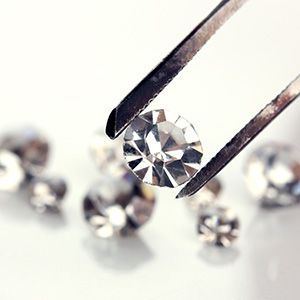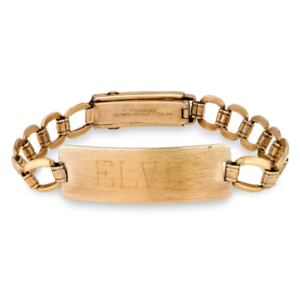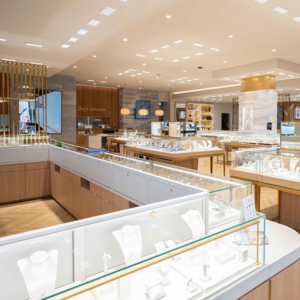
After the National Advertising Division (NAD) criticized some statements made by the Natural Diamond Council (NDC)—three weeks after it warned Diamond Foundry to clarify its product descriptions, in response to an NDC complaint—a friend texted me that he found the whole battle “nauseating and embarrassing.”
The never-ending hostilities between the lab-grown and natural diamond industries are, indeed, nauseating and embarrassing, and will ultimately hurt both businesses. But given that certain people seem fueled by an almost compulsive need to be negative, perhaps it’s valuable and clarifying to bring in neutral parties like the NAD or the Federal Trade Commission (FTC) to settle disputes.
In general, the NAD has been scrupulous and fair, giving both parties something to be happy, and unhappy, about. (Both sides say they will abide by the NAD’s rulings.)
With one exception, there was little in this second NAD decision that was based in the FTC jewelry guides (JCK has been provided with a copy of the NAD’s decision, which is not public; a summary can be seen here.) The NDC case was different than Diamond Foundry’s, which involved that company’s use of non-FTC-okayed terminology, and was fairly straightforward.
Generally, the NAD tackles more difficult and complex disputes, like this one with the NDC, says Laura Brett, vice president of the National Advertising Division for BBB National Programs.
“In most cases, we don’t have direct guidance,” she says. “Most cases, we have to apply general principles around truth in advertising. What is the reasonable basis for this claim?”
What makes the recent decision—which stemmed from a Diamond Foundry cross-complaint—worth examining is that it covers issues the industry tends to discuss regarding lab-growns: eco-claims, rarity, resale value, and “realness.”
Many in the industry think—in fact, just about everyone I talk to believes—that natural diamond supply is dwindling, and that resale is a genuine issue for lab-grown diamonds. The NAD frowned on claims along those lines. Are they suddenly not allowed?
That’s a tricky question, which even Brett didn’t have a precise answer for. She notes the rulings were limited to the disputed claims only. Other claims might be allowed, provided there’s backup, or at least backup acceptable to the NAD.
Let’s look at all four contested claims, what the NAD decided, and why:
The first decision was straightforward. The NAD didn’t like the NDC saying that lab-grown diamonds have three times the carbon footprint as mined gems. This assertion was based on a comparison done by Trucost ESG Analysis in 2019 for the NDC’s successor, the Diamond Producers Association (DPA).
In this case, Trucost was faulted for not surveying 85% of the industry (the DPA represented 75%), which the NAD considers necessary to make an industry-wide claim, and for not acknowledging that some lab-grown manufacturers now use renewable energy. Granted, these “old” numbers are from 2019, and market sources say that most lab-grown diamonds are still not produced with renewable anything. Still, that carbon comparison always struck me as useless. (Trucost could not be reached for comment.)
The NAD also complained that some of the lab-grown power numbers were secondhand, including those a grower gave to JCK. Trucost said it was doing its best with what was out there, since lab-grown diamond producers are generally reluctant to discuss their eco-impact. (For instance, when I asked Diamond Foundry spokeswoman Catherine Martin about the company’s water use, she said, “It’s cycled water for cooling akin to what any larger building uses,” which is almost the Platonic ideal of an absurd non-answer.) Brett counters that just because developing a claim is difficult “doesn’t change the substantiation that’s required.”
It’s not clear if the standards used to cast doubt on the Trucost study (such as requiring up-to-date data) would raise similar questions about this Diamond Foundry tweet, which was posted the same day the NAD released its decision.
We’re committed to improving & restoring our Earth.
See more: https://t.co/1ltuSDIguB #EarthDayFor every carat of diamond we produce, we save
– 143 lbs (65kg) of carbon dioxide
– 2,011 oz (57kg) of air pollution
– 120 gallons (454L) of water
– 250 tons (227 tonnes) of earth pic.twitter.com/DMXPeL2Cta— Diamond Foundry (@diamondfoundry) April 22, 2021
A similar tweet remains pinned to the top of Diamond Foundry’s profile, credited to one of Diamond Foundry’s Silicon Valley backers, Obvious Ventures.
When shown the above tweet, Brett said she couldn’t comment on it unless she knew the basis for its numbers.
“I hope they can substantiate that claim,” she says. “We really do hope that parties that have undertaken an NAD review understand the requirements for claim substantiation.”
So how did Diamond Foundry derive those numbers? The company wouldn’t say, and Obvious Ventures said it got its numbers from Diamond Foundry. But some of the data was linked back to this Diamond Foundry blog post, which references research from 2010 and the now-shuttered Argyle mine. Martin also referred JCK to this post, which compares Diamond Foundry’s kilowatts-per-hour to a large, frightening red bar labelled “mining,” for which it provides no source. The post then attacks the Trucost study (which is fine) and a Trucost staffer for being an astrologer (which is gross).
As I’ve argued many times, industry-wide comparative claims are pointless and generally dubious. Each product should stand on its own merits. The NAD will have done a true service if it shuts down this noxious vein of trade discourse, which has turned legitimate environmental concerns into a cynical marketing ploy. The issues involved are way too important for that.
For the next two claims—scarcity and the secondary market—the NAD was exploring seemingly new territory.
Here is one scarcity claim that was disputed by Diamond Foundry—and eventually the NAD: “Natural diamonds are finite and rare. The number of recovered diamonds peaked in 2005 and will decrease significantly over the next decade. Diamonds are becoming rarer every day because no new discoveries have been made in about 30 years.”
With perhaps a tweak or two, this assertion is generally endorsed by analysts. In fact, even stronger assertions have been made by lab-grown diamond executives, when it suits them. In 2017, Diamond Foundry CEO Martin Roscheisen said:
In 20 years, 100% of all diamonds will be man-made because there’s no earth supply left by then, according to the large miners. There’s been no new mine discovered in 25 years. So today we are somewhere between 1% and 100%. But there’s certainty it’ll be 100% in 20 years.
Again, Brett notes she is unable to remark on specific comments without understanding the basis for them, but, with regard to the above statement, she says, “We would hold that comment to a similar standard [as the NDC’s].… When you’re forecasting the future, you’re stepping into an area where it’s going to be hard to substantiate.”
For the record, it’s not at all certain that diamond production will disappear in 20 years. De Beers has committed to keeping its Venetia mine open beyond 2045. And Lucara’s Karowe mine will remain open through 2040. (Diamond Foundry didn’t respond to a request for comment.)
Regardless, the fact that this growing-scarcity assertion is widely accepted—even by the CEO of a company that ostensibly objects to it—makes it strange that the NAD called it “misleading.” Its objection argues the disputed language “reasonably conveys…that consumers might become ‘priced out’ of the diamond market…and that they must therefore act now.”
With all due respect, that’s a huge leap; that “inference” is so subtle, this reasonable consumer totally missed it. If that were NDC’s true implication, wouldn’t it say that? Generally, ads that create a “sense of urgency”‘ include a call to action. This didn’t. To use NAD lingo, there is “no reasonable basis” that either the advertiser—or any consumer—ever made that inference.
Brett says it’s possible that using couched language like “forecasts say” or “the general trend is” might allow comments about increasing diamond scarcity, provided that’s what the forecasts say and that’s what the general trend is.
“When talking about supply, it may be easier to substantiate a claim about past trends,” she adds. “A claim about the future supply can be truthful but it needs to have a reasonable basis.”
The third issue—resale—was also thorny. The NDC was faulted for saying that lab-grown diamonds have “little to no resale value.”
In the world of eBay or Craigslist, it’s wrong to suggest any product has no resale value. Is there less of a resale market for lab-grown diamonds than for natural gems? Given that Kay, the largest retail jeweler in America, won’t offer trade-ins for them (nor will other Signet banners), while it will for naturals, that’s not an illogical assumption.
The decision says that the NDC didn’t provide any market research for its assertion, though it might allow that claim if it did. So, you can say it if you can prove it (at least to the NAD’s satisfaction). Whether consumers care is another matter.

The final issue covered the word real. The FTC has cautioned that it’s misleading to use that and similar words in a way that suggests that lab-grown diamonds are not genuine diamonds, but simulants like cubic zirconia. In this instance, the NDC was rapped for saying the “difference between a real diamond and a lab-grown diamond is simple.… A real diamond is unique and rare, formed one hundred miles below Earth’s surface.”
To me, it’s always been obvious that lab-grown diamonds are real diamonds. It’s in the name. They aren’t lab-grown potatoes.
In light of the FTC’s statements, the language here definitely pushed the line, and those comments were rightfully called out.
One point: Under FTC rules, it’s still okay for natural diamond companies to use real or genuine to describe their products, provided use of that term doesn’t imply lab-grown diamonds are not actual diamonds.
So where does this leave us?
Brett notes that the First Amendment hasn’t been repealed. People are free to spout off about the pros and cons of lab-growns on the comment section of this blog, and other places. However, it’s different when a CEO or company account says something. They are viewed as speaking for the company, and that’s considered advertising.
(I would be interested in how the NAD would look at a CEO or company spokesperson posting with a fake name, which has happened here several times.)
All in all, this ruling does not seem to be the game changer that some first thought. Certain statements on the NDC website will be scrubbed, though a group source tells me it wasn’t all that wedded to them anyway, and considers them a holdover from the DPA days. This person notes that this is the only action that the NDC has taken against a lab-grown company since its relaunch 15 months ago: “This just isn’t our focus.”
Otherwise, certain subjects are not verboten, nor are certain opinions. But any claims are subject to scrutiny, which is of course true of all advertising.
If there’s a lesson here, it’s that you must be precise in your choice of language, especially in ads or on your website, and even more so, if you’re disparaging the competition—though it’s probably best if you don’t disparage the competition, in ads or on your website. It makes you look terrible.
Asked for a takeaway, Brett stresses, “Every claim must have a reasonable basis.” Where the trade has to be careful, perhaps, is that a reasonable basis is not the same as a reasonable belief.
This post has been updated with a comment from Obvious Ventures.
(Photo: Getty)
- Subscribe to the JCK News Daily
- Subscribe to the JCK Special Report
- Follow JCK on Instagram: @jckmagazine
- Follow JCK on X: @jckmagazine
- Follow JCK on Facebook: @jckmagazine






